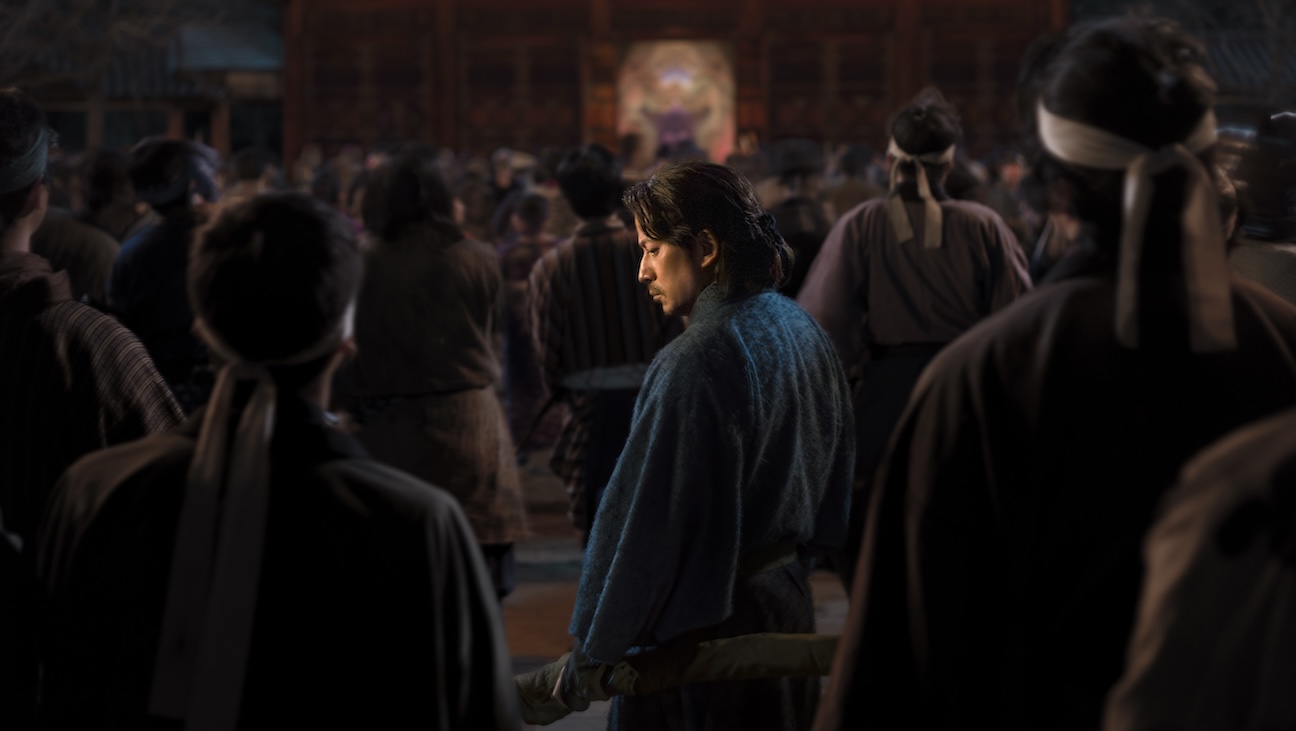World
Junichi Okada Discusses ‘Last Samurai Standing’ on Netflix

Japanese actor and producer Junichi Okada has launched his new Netflix series, Last Samurai Standing, which is generating excitement across social media. Described as a blend of Squid Game and Shōgun, the series is based on Shogo Imamura’s 2022 historical fiction novel, Ikusagami, which has also seen success as a manga. Set in 1878 Japan, the show explores a post-feudal society where the remaining samurai face ostracism and struggle for survival.
The narrative follows 292 desperate samurai drawn to a high-stakes tournament promising a prize of 100,000 yen. Okada portrays Shujiro Saga, a noble samurai fighting to secure the future of his ailing wife and child. The series, which launched last week, has already garnered a perfect 100 percent critics score on Rotten Tomatoes, along with a 96 percent audience rating. Critics highlight the engaging premise and abundant samurai action, with The Hollywood Reporter noting the show provides the action some felt was lacking in earlier adaptations.
The production has also received recognition from esteemed game designer Hideo Kojima, who praised the series on social media shortly after its release. This endorsement adds to the buzz surrounding the show, which blends traditional samurai elements with a contemporary survival game format.
Okada, who is also the show’s action choreographer and producer, shared insights about his multi-faceted role during a recent interview. He explained that managing these three responsibilities required a shift in mindset. “Having these three roles is like using three different brains,” he said. As a producer, he focused on financial aspects and project management, while as a choreographer, he was deeply involved in the creative process of crafting fight sequences.
The series features a diverse array of fight styles, reflecting the unique characteristics of each character. Okada noted the importance of choreography in conveying the personalities and motivations of the characters, particularly in the case of female characters like Iroha, played by Kaya Kiyohara. He emphasized that fight scenes had to blend realism with dramatic flair, ensuring that the choreography felt authentic to the historical period.
When discussing the scale of the production, Okada revealed that the project involved between 2,000 and 3,000 people, including extras and crew members. To manage this large-scale endeavor, the team operated with two filming units simultaneously. The attention to detail extended to the costumes, crafted by a network of seamstresses across Japan, enhancing the series’ authenticity.
While striving for historical accuracy, the creators opted to avoid fantastical elements found in the source material. Okada explained that while the original story included characters with superhuman abilities, the first season focuses on realism and the gritty challenges the samurai face. “We concentrated on making it feel more real,” he said, indicating that future seasons might explore these supernatural elements if the show is well-received.
Okada described Last Samurai Standing as a unique blend of popular Japanese cinema and television influences, drawing inspiration from well-known titles like Battle Royale and Alice in Borderland. He expressed his intent to elevate Japanese culture through the series while remaining true to its historical context.
With the series now available on Netflix, audiences can expect an engaging combination of intense action, rich storytelling, and cultural depth. As viewers immerse themselves in the world of Last Samurai Standing, Okada’s dedication to the project and its authenticity shines through, setting the stage for what could be the next significant Asian hit on the platform.
-

 Science4 weeks ago
Science4 weeks agoInventor Achieves Breakthrough with 2 Billion FPS Laser Video
-

 Health1 month ago
Health1 month agoCommunity Unites for 7th Annual Into the Light Walk for Mental Health
-

 Top Stories1 month ago
Top Stories1 month agoCharlie Sheen’s New Romance: ‘Glowing’ with Younger Partner
-

 Entertainment1 month ago
Entertainment1 month agoDua Lipa Aces GCSE Spanish, Sparks Super Bowl Buzz with Fans
-

 Entertainment1 month ago
Entertainment1 month agoMother Fights to Reunite with Children After Kidnapping in New Drama
-

 Business1 month ago
Business1 month agoTyler Technologies Set to Reveal Q3 Earnings on October 22
-

 World1 month ago
World1 month agoR&B Icon D’Angelo Dies at 51, Leaving Lasting Legacy
-

 Health1 month ago
Health1 month agoCurium Group, PeptiDream, and PDRadiopharma Launch Key Cancer Trial
-

 Entertainment1 month ago
Entertainment1 month agoRed Sox’s Bregman to Become Free Agent; Tigers Commit to Skubal
-

 Health1 month ago
Health1 month agoNorth Carolina’s Biotech Boom: Billions in New Investments
-

 Science1 month ago
Science1 month agoNorth Carolina’s Biotech Boom: Billions Invested in Manufacturing
-

 Top Stories1 month ago
Top Stories1 month agoFormer Mozilla CMO Launches AI-Driven Cannabis Cocktail Brand Fast









